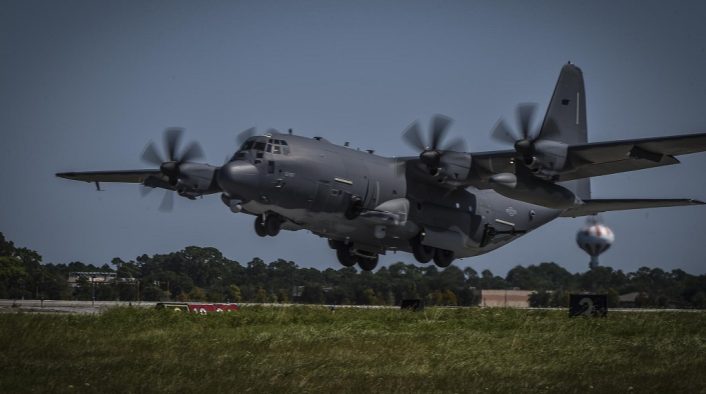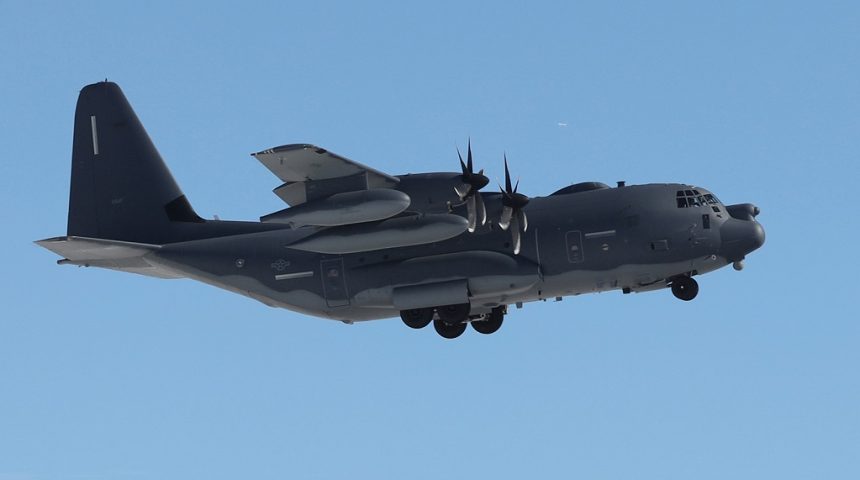The program is said to improve situational awareness and aircraft survivability during missions in support of Special Operation Forces.
The U.S. Special Operations Command (USSOCOM), on July 1, 2020, awarded Sierra Nevada Corporation (SNC) a USD 700 million contract to install new Radio Frequency Countermeasure (RFCM) systems in the AC-130J Ghostrider and MC-130J Commando II and provide Special Operation Forces (SOF) with accurate and timely situational awareness information and improve aircraft survivability.
According to the official statement from SNC, the unspecified RFCM system will be produced by Northrop Grumman and will be able to provide threat detection, precision geolocation and active countermeasure capabilities, with SNC leveraging existing datalinks on both aircraft, integrated processing and common tactical display systems to integrate the RFCM system.
This is not the first time SNC works on special mission aircraft, as they already worked with AC-130J to provide the Precision Strike Package (a modular package comprising a mission management console, communications systems, two EO/IR sensors, precision guided munitions and cannons) and with the MC-130J to provide the Airborne Mission Networking (AbMN) system.
The first aircraft with the AbMN system was delivered in May 2020 and fuses data from different sources in a joint environment via datalink, radios and satellite communications to provide battlefield management, threat avoidance, surveillance information and situational awareness.
The aforementioned upgrades are part of a continuing effort to provide new capabilities to the AC/MC-130J platform, developed from the same base aircraft configuration, to fully replace the capabilities of legacy platform that are being retired, like the AC-130U that was retired last year. The upgrades will also introduce new capabilities, like the 60 kW “less than lethal” laser weapon system that will be tested aboard the AC-130J in 2022, as announced this year during the Special Operations Forces Industry Conference (SOFIC).

At this time, little is known about this new RFCM system, other than the details provided in SNC’s statement. However, USSOCOM had a similar program back in 2015/2016, resulting in 2017 in a USD 67 million dollar contract (with options up to 300 million) awarded to BAE Systems to upgrade both the Ghostrider and the Commando II with a RFCM system to “detect, identify, locate, deny, degrade, disrupt, and defeat various threats that aircrews might encounter inside hostile airspace”.
Interestingly enough, Northrop Grumman was the other company involved in that program and the company’s protests after the contract award were dismissed by the Government Accountability Office because of “incomplete software/firmware coding and hardware design, as well as the necessary testing/integration”.
We don’t know about the status of this first program, however a Fiscal Year 2018 public report of the Director of Operational Test & Evaluation states: “The separate USSOCOM program that is developing and testing the RFCM system for both AC-130J and MC-130J experienced a 6-month delay of hardware integration due to antenna design deficiencies. Developmental testing on the first aircraft is scheduled to begin in February 2019.” The system was also supposed to reach Initial Operating Capability in 2019.
The unclassified Fiscal Year 2019 Budget Estimates for USSOCOM show the program and “continuing with fabrication, integration and testing” through 2018 and 2019, so we can’t say for sure if the Northrop Grumman RFCM suite is an upgrade, integration or total replacement of the previous BAE Systems RFCM suite. The FY2020 Budget Estimates don’t add anything new, other than the new system going to full rate production in 2022.
Another interesting bit may be provided by Air Force Budget Estimates for Fiscal Years 2019 and 2020, where a similar HC-130J Combat King II RFCM program is mentioned using the ALQ-213A(V) Defensive Aids Controller to link together the RFCM system, the Countermeasures Dispenser System (CMDS) and other associated defensive systems.









